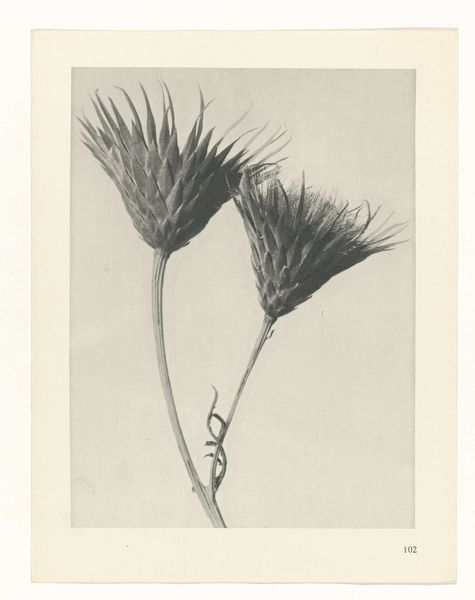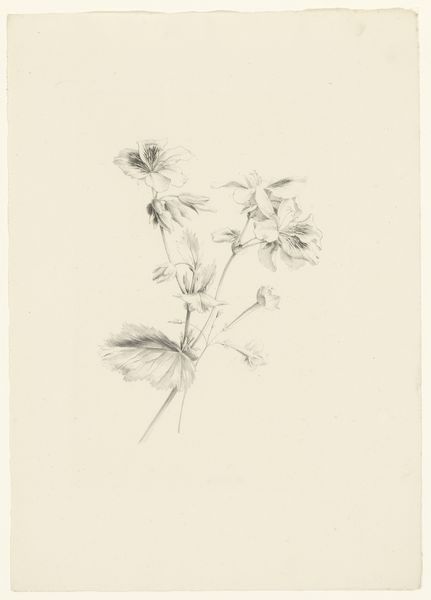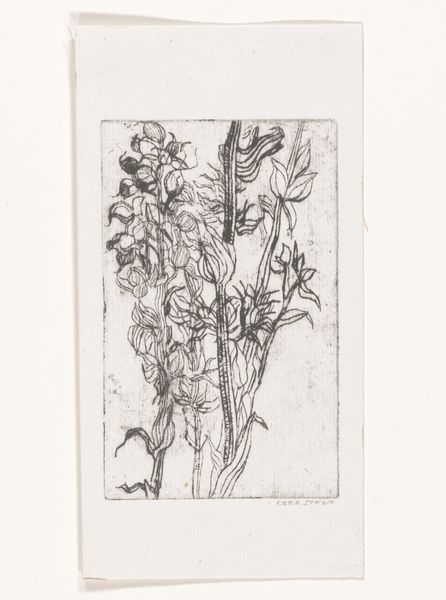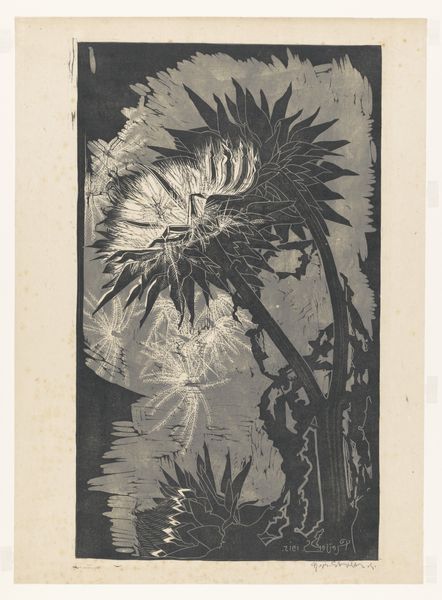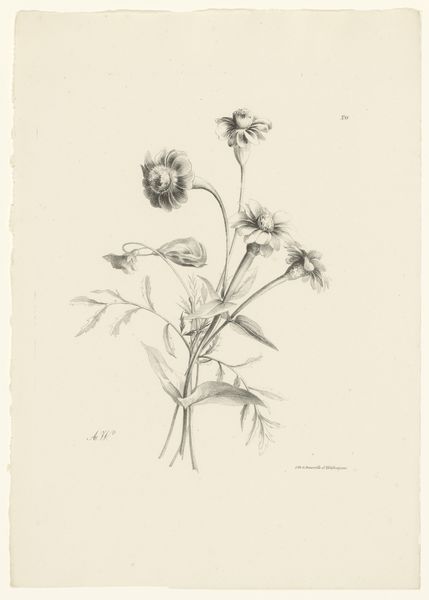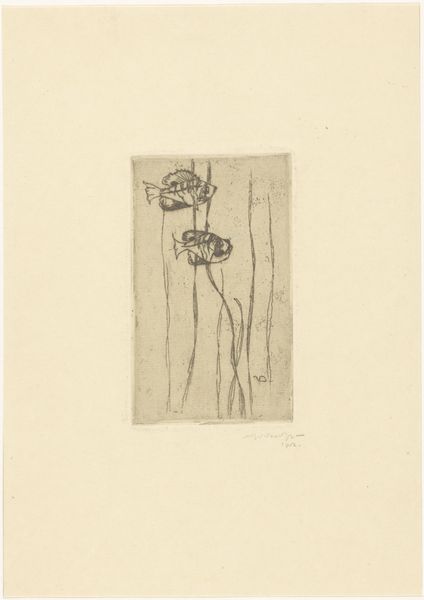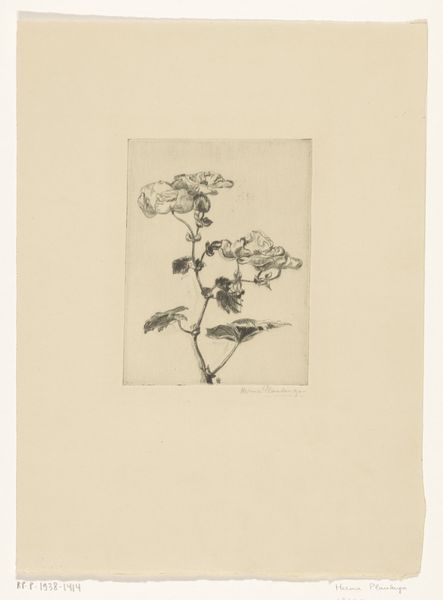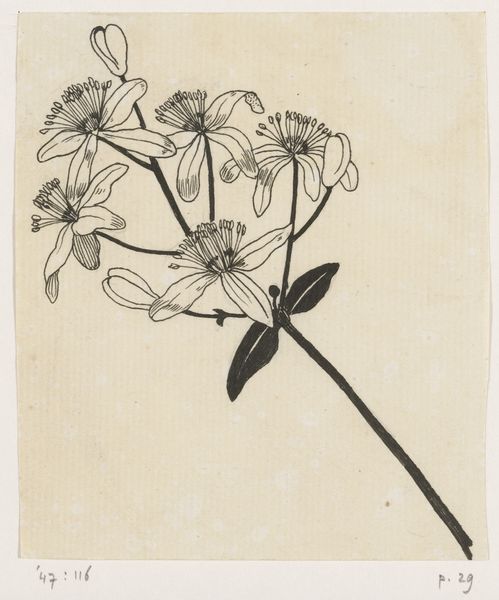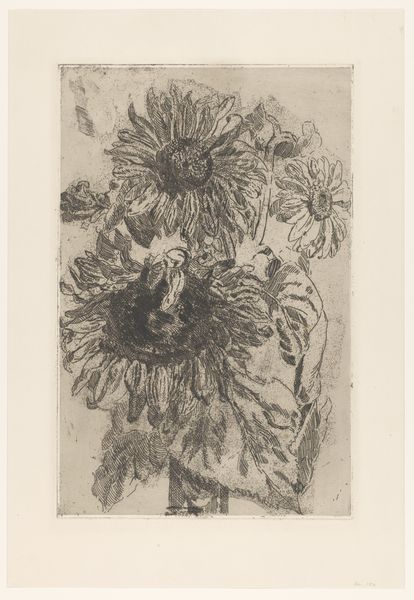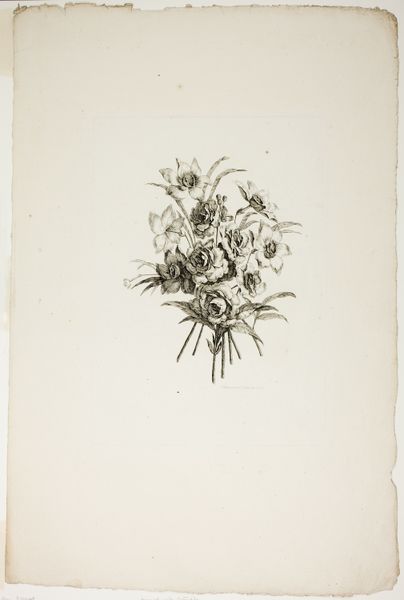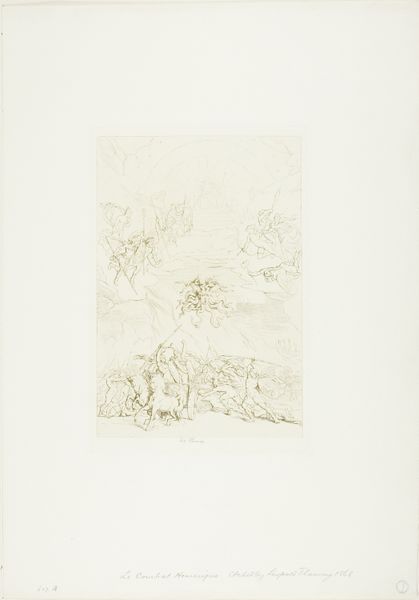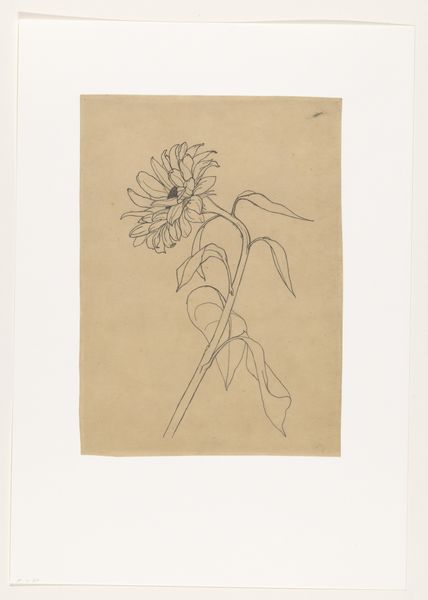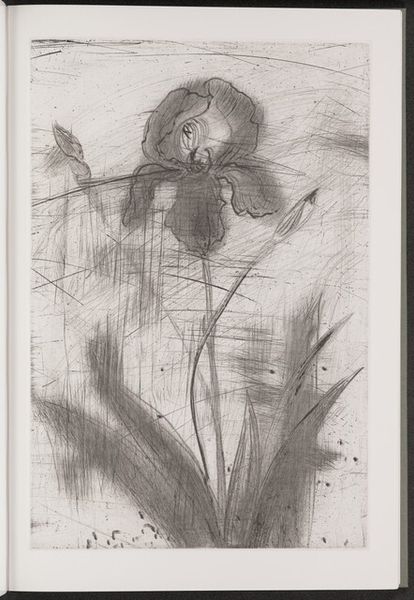
drawing, paper, ink
#
vegetal
#
drawing
#
natural shape and form
#
natural formation
#
natural tone
#
natural substance
#
pencil sketch
#
paper
#
form
#
ink
#
plant
#
botanical drawing
#
line
#
remaining negative space
#
botanical art
#
natural form
#
realism
Dimensions: height 160 mm, width 118 mm, height 115 mm, width 88 mm
Copyright: Rijks Museum: Open Domain
Curator: This is "Stengels met doorns," or "Stems with Thorns," by Kees Stoop. It's a drawing done in ink and pencil on paper, dating somewhere between 1944 and 1990, and it’s now part of the Rijksmuseum collection. Editor: My first thought? Wistful. There's a certain stark beauty, but also a vulnerability in those spindly, thorny stems reaching upwards. Almost like a silent plea. Curator: I see what you mean. Stoop really captures a kind of delicate structure here. The linear quality of the stems, for example—notice how each is meticulously rendered. The thorns aren't just sketched in; they're individually articulated, aren't they? And that focus is characteristic of a formalist approach. Editor: Yes, absolutely! The eye is drawn to that detail. And then contrasted with the fluffier bits at the top of some stems. It’s like nature embracing paradoxes—defense and display, all intertwined. Did Stoop intend for the viewer to get so close to a plant that often goes unnoticed? Curator: Perhaps. He focuses sharply on natural form here. In art, as in life, what initially repels us sometimes compels us. I like how the density of the drawing fluctuates; some areas are intensely detailed while others are almost bare, allowing the white of the paper to breathe. That conscious arrangement suggests a deeper conceptual interest in space and form. Editor: It's this negotiation between positive and negative space that adds depth. The thorns may present one formal aspect of Stoop’s art here, but these darker inked natural substances, together with a light pencil sketching feel quite accessible, almost tender. Curator: I agree. The execution here adds an unexpected softness to a prickly subject. It makes you contemplate not just the resilience, but maybe the quiet beauty of endurance. What a magnificent testament to the oft-overlooked corners of the natural world, huh? Editor: Indeed! And perhaps that's why the drawing has resonated so profoundly—it allows us to appreciate the extraordinary in the ordinary.
Comments
No comments
Be the first to comment and join the conversation on the ultimate creative platform.
